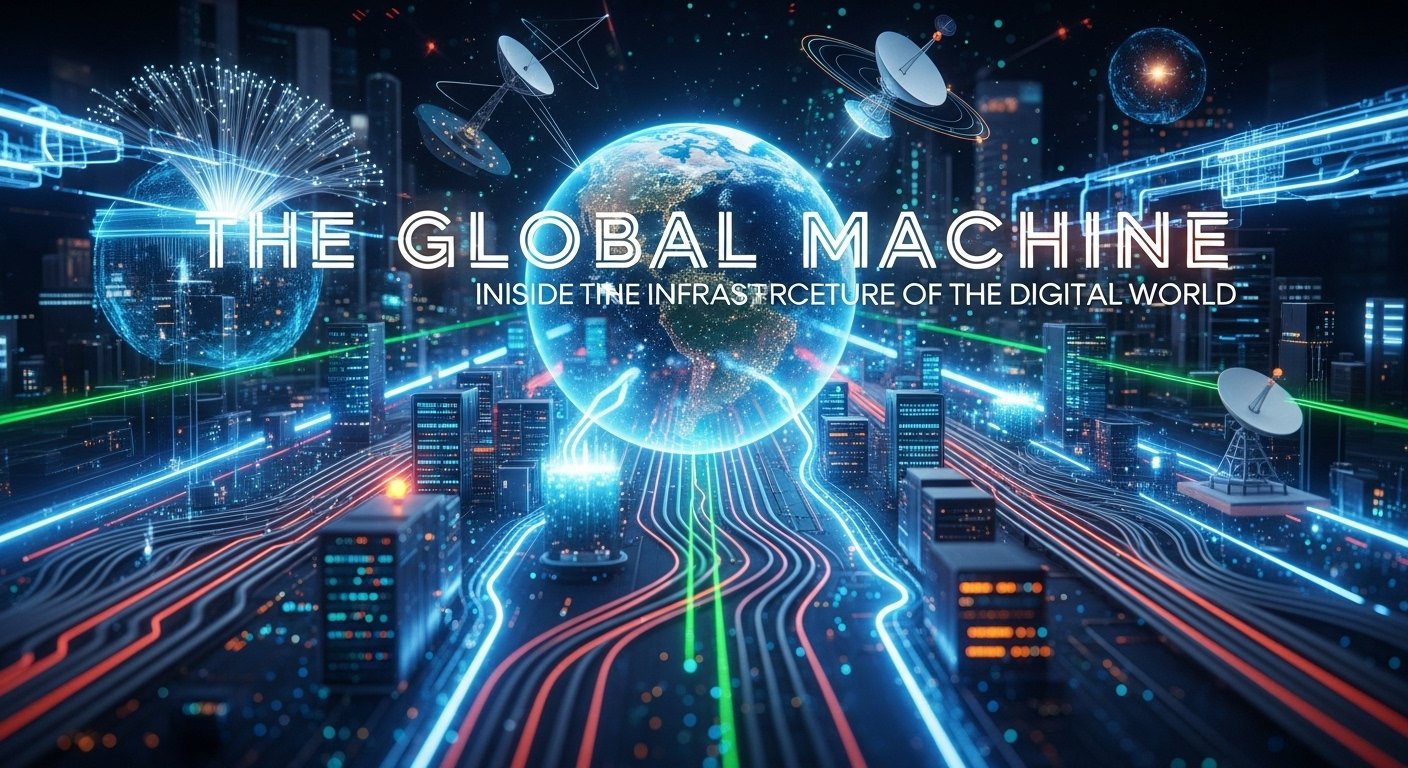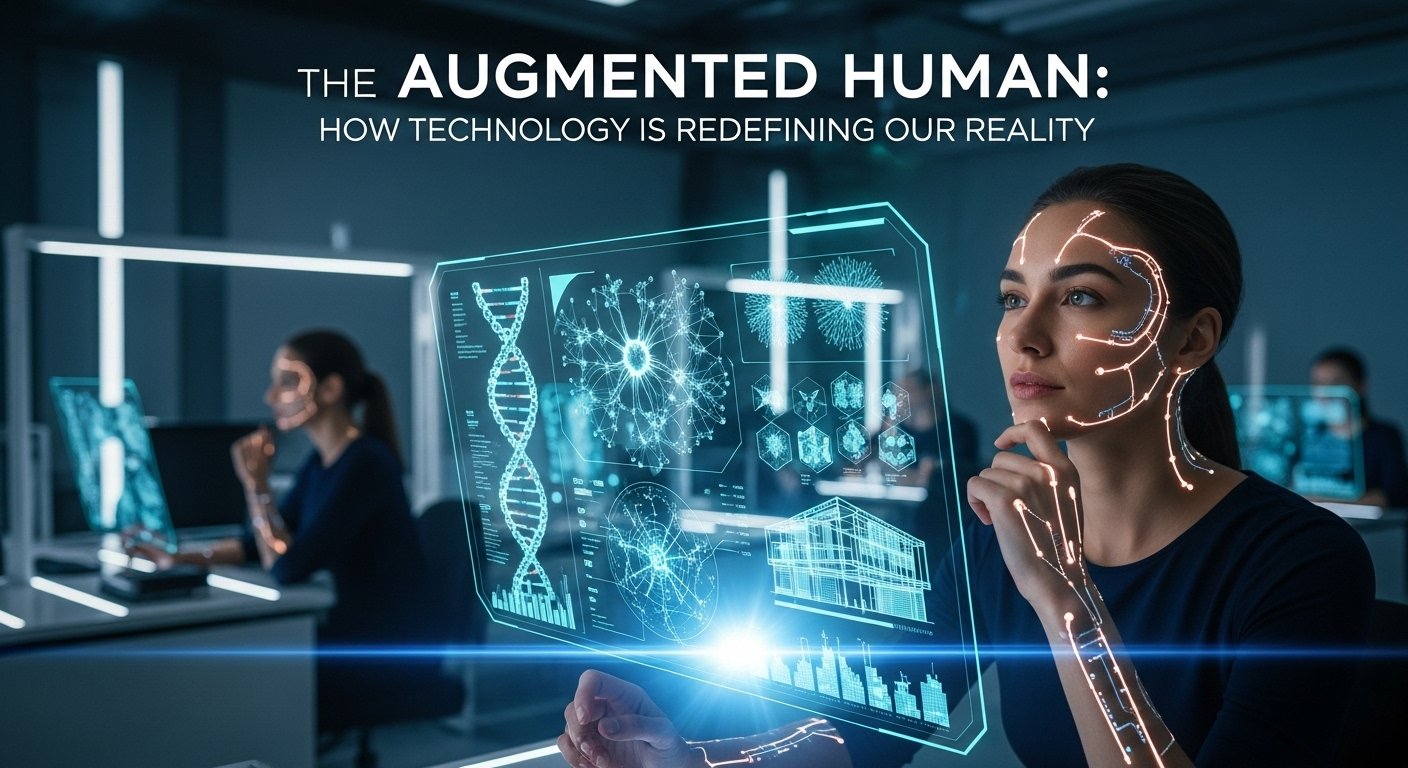With a simple tap on a smartphone, we order food, summon a car, stream a film, or speak to someone on the other side of the planet. The experience is seamless, intuitive, and feels almost like magic. But behind every simple tap lies a global machine of staggering complexity—a vast, interconnected, and largely invisible infrastructure that forms the true foundation of modern life. In 2025, the most important technology is not the sleek device in our hand, but the unseen network of systems that gives that device its power.
This is a journey into that hidden world, a look at the physical and logical layers of the global machine: the data centers that act as its brain, the networks that serve as its nervous system, and the software protocols that function as its universal language.
The Data Center: The Brains of the Cloud
The term “the cloud” is perhaps the most successful marketing abstraction of our time. It evokes a sense of ethereal, weightless data floating in the ether. The reality is far more concrete. The cloud is a physical network of colossal, hyper-secure, and power-hungry buildings called data centers. These facilities, run by giants like Amazon Web Services (AWS), Microsoft Azure, and Google Cloud, are the centralized brains of our decentralized digital lives.
Each data center is a marvel of engineering, containing tens of thousands of server racks, all humming in unison. They are connected to national power grids by dedicated substations and often have massive backup generators and batteries to ensure 100% uptime. Because the servers generate immense heat, a significant portion of the facility’s energy is dedicated to sophisticated cooling systems.
These buildings are the physical location of our digital world. They store our photos and emails, host the websites we browse, power the streaming services we watch, and, most critically in 2025, provide the immense computational power required to train and run the Artificial Intelligence models that have become integrated into our daily lives.
The Global Nervous System: Subsea Cables and Satellites
How does a request from your phone get to a data center that might be thousands of kilometers away? The answer is not primarily through satellites or wireless signals in the air, but through the sea. Over 98% of all international internet traffic travels as pulses of light through a globe-spanning network of fiber-optic cables laid on the ocean floor.
These subsea cables are the true nervous system of our planet. Each one is typically no thicker than a garden hose, containing a bundle of hair-thin glass fibers protected by layers of steel and plastic. These cables stretch for thousands of kilometers across the vast, inhospitable terrain of the seabed, connecting continents and enabling near-instantaneous communication at almost the speed of light. Our entire global economy, from financial markets to social media, depends on the integrity of this underwater network.
Satellites play a vital, complementary role. Constellations of low-Earth orbit (LEO) satellites, like those operated by Starlink and its competitors, are crucial for providing connectivity to the planet’s hardest-to-reach places. They bring the internet to remote rural areas, ships at sea, and airplanes in flight—locations where laying a physical cable is impossible or impractical.
The Universal Language: APIs and Protocols
For this global hardware to function, there must be a common language. This is the role of software protocols and, most visibly, Application Programming Interfaces (APIs). An API is essentially a set of rules and tools that allows one software application to request services and data from another. They are the invisible glue that holds our digital services together.
When a travel app shows you flights from a dozen different airlines on one screen, it is using each airline’s API to request that information. When you log into a new website using your Google or Facebook account, an API is securely authenticating you. When your weather app gives you a five-day forecast, it is “calling” a weather data provider’s API. This interaction can be represented conceptually:
Request: App_A → API_B(Query, Auth)
Response: API_B → App_A(Data, Status)
This constant, silent conversation between applications, facilitated by APIs, is what makes the rich, interconnected ecosystem of apps possible. Deeper still are the foundational protocols like TCP/IP (Transmission Control Protocol/Internet Protocol), the fundamental grammar of the internet that has ensured for decades that data packets sent from one address arrive reliably at another.
The Logic Layer: GPS and Global Logistics
The final layer of this invisible infrastructure is the one that connects the digital world back to our physical reality. The Global Positioning System (GPS) and other Global Navigation Satellite Systems (GNSS) provide a universal, hyper-accurate grid of time and location for the entire planet.
Originally developed for military purposes, GPS has become a fundamental public utility that underpins countless industries. It is the technology that allows ride-hailing and food delivery apps to function. It enables precision agriculture, where tractors can plow fields with centimeter-level accuracy. It is essential for global shipping, aviation, and even the synchronization of transactions between international financial markets.
This location data feeds into another unseen system: the complex logistics algorithms that manage our global supply chains. These algorithms can calculate the most efficient route for a container ship, optimize the delivery route for a fleet of trucks, and track a single package from a warehouse on one continent to a customer’s doorstep on another.
Conclusion: Appreciating the Machine
Our modern digital experience is a masterpiece of abstraction. It is designed to make us forget the staggering complexity that lies beneath the surface. The ability to effortlessly access the world’s information and services is built upon a physical foundation of incredible scale and an intricate web of logical protocols.
Understanding this invisible infrastructure is a new form of literacy for the 21st century. It allows us to appreciate the marvel of engineering that powers our world, but also to recognize its points of fragility—its reliance on a handful of cloud providers, the vulnerability of key subsea cable routes, and the immense energy required to keep it all running. The next time you tap your screen, take a moment to consider the global machine that whirs to life: the data center, the ocean cable, the satellite, and the silent languages of software. In that silent, instantaneous response, you are witnessing one of the greatest technological achievements in human history.



